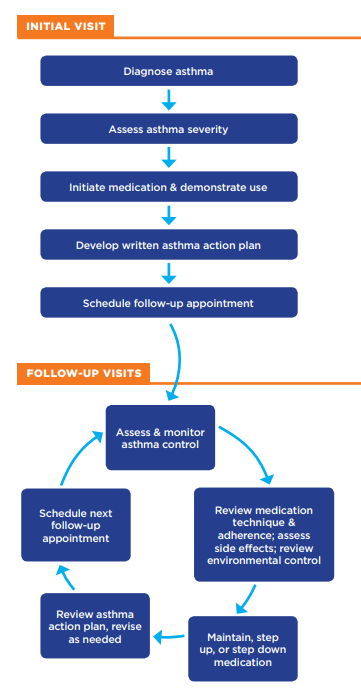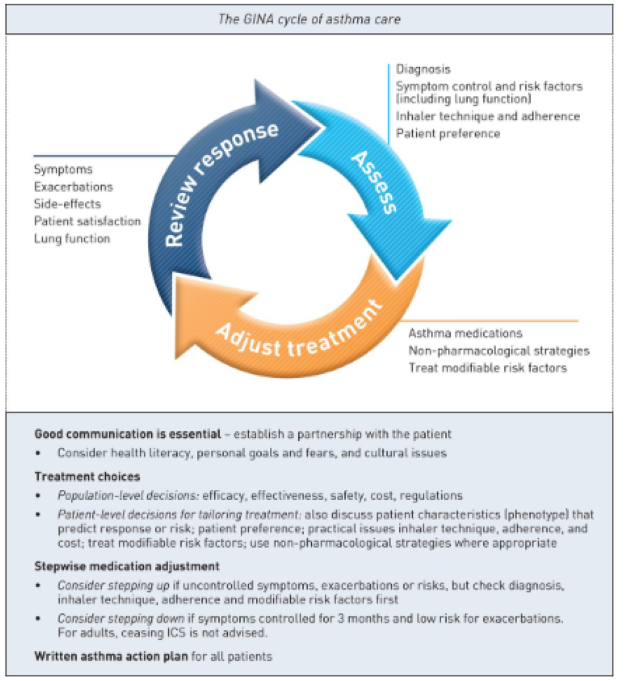4. Goals of Asthma Therapy and Management
The EPR4 and GINA reports are widely available for review. In this reference guide, we will only highlight the key aspects of these guidelines.
Key components of therapy reviewed in the EPR:
- Assessing (diagnosing) and monitoring asthma severity
- Education for a partnership in care
- Environmental and comorbidity control
- Medication management
The EPR recommendations on asthma emphasize diagnosis and assessment of asthma severity on the first visit, with subsequent visits being focused on titration of medications based on asthma control.

EPR 4 provided updated guidance on 6 priority topics in asthma care:
- Fractional exhaled nitric oxide (FeNO)
- Indoor allergen mitigation
- Intermittent inhaled corticosteroids
- Long-acting muscarinic antagonists (LAMA)
- Immunotherapy in the treatment of allergic asthma
- Bronchial Thermoplasty
GINA Cycle for Personalized Asthma Management:
The GINA recommendations for personalized asthma management emphasize asthma management as a continued cycle of reviewing, assessing, and adjusting asthma treatments throughout the lifespan of a patient. Of note, unlike the EPR, the diagnosis of asthma may be done at the first visit, but the severity of asthma is defined by the level of medication to obtain good asthma control.

Asthma Reference Guide Menu
- Asthma Reference Guide Home
- 1. Introduction to Asthma
- 2. Asthma Diagnosis
- 3. Asthma Presentation
- 4. Goals of Asthma Therapy and Management
- 5. Asthma Severity and Asthma Control
- 6. Asthma Outpatient Management
- 7. Treating Modifiable Risk Factors
- 8. Treating Co-Morbid Conditions
- 9. Asthma Medications
- 10. Yellow Zone Therapy Options
- 11. Allergy Immunotherapy and Biologic Therapy
- 12. Asthma Exacerbations in the Emergency Department or Urgent Care
- 13. Special Asthma Considerations for Inpatient
- 14. Asthma Management in the PICU
- 15. Respiratory Support for Asthma Exacerbation
- 16. Asthma Education Resources